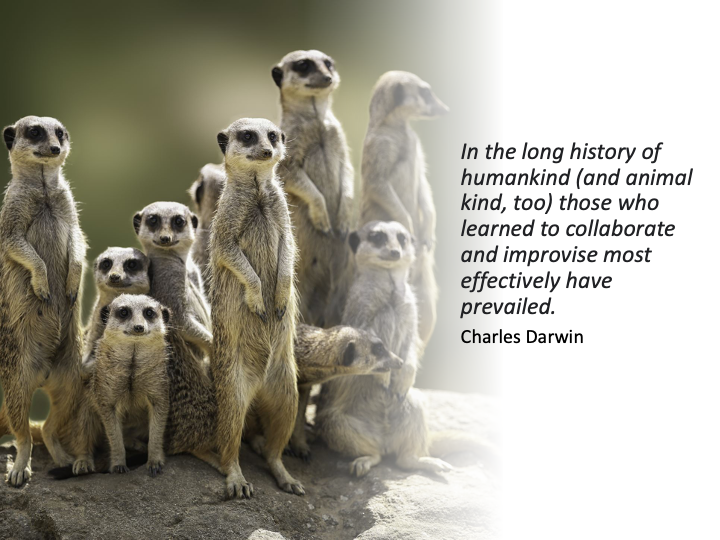Monthly Archive for December, 2023
Kaufman SB and Jauk E (2020). Healthy Selfishness and Pathological Altruism: Measuring Two Paradoxical Forms of Selfishness. Front. Psychol. 11:1006.
In his 1939 essay “Selfishness and Self-Love,” Erich Fromm opened by declaring that “Modern culture is pervaded by a taboo on selfishness. It teaches that to be selfish is sinful and that to love others is virtuous.” In his essay, Fromm argues that this cultural taboo has had the unfortunate consequence of making people feel guilty to show themselves healthy self-love, which he defines as the passionate affirmation and respect for one’s own happiness, growth, and freedom.
Fromm argues that the form of selfishness that society decries— an interest only in oneself and the inability to give with pleasure and respect the dignity and integrity of others— is actually the opposite of self-love. To Fromm, love is an attitude that is indiscriminate of whether it is directed outward or inward.
In contrast, Fromm argued that selfishness is a kind of greediness: “Like all greediness, it contains an instability, as a consequence of which there is never any real satisfaction. Greed is a bottomless pit which exhausts the person in an endless effort to satisfy the need without ever reaching satisfaction” (Fromm, 1939).
Inspired by Fromm’s essay, Maslow (1943/1996) wrote an essay in which he argued for the need to clearly distinguish “healthy selfishness” from unhealthy selfishness, as well as the importance of distinguishing healthy and unhealthy motivations for one’s seemingly selfish behavior. Defining selfishness as any behavior that brings any pleasure or benefit to the individual, Maslow argued that: “For our part, we must not prejudge the case. We must not assume that selfish or unselfish behavior is either good or bad until we actually determine where the truth exists.
It may be that at certain times, selfish behavior is good, and at other times, it is bad. It also may be that unselfish behavior is sometimes good and at other times bad.” Maslow goes on to note that “a good deal of what appears to be unselfish behavior may come out of forces that are psychopathological and that originates in selfish motivation” (p. 110).
Calling for the need for a new vocabulary that incorporates the notion of healthy selfishness, Maslow noted that in the process of psychotherapy it is sometimes necessary to teach people at certain times to engage in a “healthfully selfish manner”— to have a healthy respect for one’s self that stems from abundance and need gratification— that “comes out of inner riches rather than inner poverty” (p. 110).
A recent meta-analysis of the literature on communion supports these early ideas. Le et al. (2018) found that communally motivated people who care for the welfare of others and their close relationship partners experience greater relationship wellbeing. However, personal well-being was maximized only to the extent that people were not self-neglecting in their communal care. Therefore, while the health and relationship benefits of promoting the well-being of others has been well-documented (Crocker and Canevello, 2008, 2018), the role of healthy selfishness in contributing to well-being and relationships may have been neglected in the literature.
The psychotherapists of the National Adolescence Observatory, who have been present in schools of all levels nationwide for years, have responded to numerous requests for help within both school-based and online activities. During discussions held within psychological listening services, it emerged that about 1 in 4 adolescents have experienced depressive episodes in the past year, approximately 1 in 5 have exhibited anxiety-related issues, specifically panic disorders and social phobia, and 25% have engaged in self-harming behaviors.
In my experience in competitive sports, I have witnessed an increase in anxiety crises and panic attacks among adolescent athletes. Panic attacks in athletes can occur during competitions or intense and stressful training sessions. These attacks are sudden episodes of intense fear or discomfort that can manifest with a series of physical and psychological symptoms. The characteristics of panic attacks may include:
- Intense anxiety and fear - Athletes may experience an overwhelming sense of anxiety and fear, often without a clear or specific cause.
- Physical symptoms - These can include palpitations, excessive sweating, tremors, sensation of choking or shortness of breath, nausea, dizziness, or feelings of faintness. Some athletes may also experience chest pains or tingling sensations in their hands and feet.
- Feeling of loss of control - Panic attacks can make athletes feel like they are losing control of the situation or their own mind, causing a sense of terror.
- Catastrophic thoughts - During a panic attack, athletes may have catastrophic thoughts about their health, sports performance, or the possibility of embarrassment in front of others.
- Isolation and avoidance - After experiencing panic attacks, athletes might avoid situations or environments they believe could trigger the same reaction.
The causes of panic attacks in athletes can vary, including:
- Performance stress and pressure - Athletes may experience high-pressure situations due to the expectation of exceptional performance, leading to anxiety and fear of failure during sporting events.
- Exposure to injuries or failures - Past experiences of severe injuries or significant sporting failures can generate anticipatory anxiety, resulting in heightened emotional sensitivity during sports activities.
- Personal characteristics - Some athletes may be genetically predisposed or have personal experiences that make them more prone to developing panic attacks.
Firstly, it is useful to learn to breathe to relax and then to be present in the here and now, maintaining awareness even during a panic attack, knowing it will eventually end. This mental approach allows for the recovery of a calmer state that was momentarily lost. This also stimulates an action that involves shifting attention from a negative psychophysiological condition, perceived as uncontrollable and debilitating, to a mental state that allows distancing from physical symptoms and catastrophic thoughts. Consequently, it’s important to address panic attacks in athletes through stress management strategies, psychological counseling, relaxation techniques, mindfulness with the support of specialized sports psychologists.
The deepening crisis continues for Napoli, which now finds itself 20 points off the top of the standings. One explanation for such negative results compared to initial expectations may have to do with the pressure generated by this expectation to repeat again this year the outstanding season completed last season and to easily regain the same team cohesion even with a new coach.
This way of thinking may have put a lot of pressure on Napoli and resulted in distrust in the players once they realized that the mechanisms of the previous season seemed to have disappeared. So this tendency to compare current performance with the previous season may have resulted in a perception of failure or disappointment.
To this must be added the expectations of the public and the media, who, following the championship victory, have increased their expectations of the team. The pressure to repeat the success, however, can become so intense and constant that, if not comforted by positive results, it is a cause of distrust in the team. Also, within the team itself, there may have been an increase in pressure. The players may have felt compelled to prove that the victory was not accidental and that they could confirm themselves as a top team.
It should also be kept in mind that success results in greater media exposure. The team becomes more visible and subject to greater media attention. This exposure may have added pressure as every step or achievement is analyzed and discussed publicly.
The coach and staff should carefully manage these forms of pressure, creating an environment that encourages confidence, reducing stress, and helping players maintain the mindset they need to meet the challenges of this new season. It may be that the team suffers from tactical problems but it certainly does not show that it is a united team in dealing with these difficulties.
In these last years I have received many requests to work with adolescents to prepare them for the mentallly to face the competition. It seems to me a positive development, as it means that in some individual sports there is the awareness of the youth’s mental aspects. This it has happened in relation to three sports: shooting, golf and tennis; disciplines in which parents must necessarily invest economically on their sons if they want them do competitive experiences and effective training. Just think of the 30 annual tennis tournaments in which a young must participate, rather than the costs of rifle, cartridges and targets in shooting or costs to participate in the golf tournament and training with a good teacher.
It becomes clear that when the parents the need for mental coaching, the economic investment becomes one of the items of expenditure that they fdo. I say this because it is very rare in Italy that a sports federation, however, invests on mental training for juniors (that would be his talents). At this age mental coaching is equivalent to the formation of the mental approach more useful to do well.
For example, at this age to learn to have a positive self-talk is definitely easier than when you will be adults and educates boys and girls to know how to encourage themselves, to face difficulties with more serenity, or to correct themselves in a positive way and without insult. I wonder why this psychological skills so important in the life of every human being must be taught only in adult age, and many will never learn it. Is it possible that the limit for the adolescents is represented by those (managers and coaches) who should be their teachers?
In football, concentration errors can significantly impact both individual and team performances. Here are some of the main concentration errors that footballers can make:
- Distraction during the game - Players can easily get distracted, losing sight of teammates’ positions, opponents, or the ball. This distraction can lead to misplaced passes, possession losses, or defensive errors.
- Lack of attention during set-pieces - Corners, free-kicks, and penalties require maximum concentration. Errors during these situations can result in conceding goals.
- Loss of focus after conceding or scoring a goal - After scoring or conceding a goal, players might momentarily lose focus, reducing their concentration and determination to continue the game.
- Underestimating opponents - Ignoring opponents’ quality can lead to lack of preparation and concentration during the game, causing avoidable errors.
- Lack of communication - Insufficient communication among players can lead to positioning errors, ineffective marking, and tactical disorganization.
- Stress and pressure - Competitive pressure from crucial game situations or high expectations can negatively affect players’ concentration, leading to mistakes.
- Lack of physical fitness - Physical fatigue can influence concentration. Fatigued players tend to make more technical and decision-making errors.
- Lack of emotional self-control - Inability to manage emotions during the game, such as frustration or euphoria, can interfere with concentration and result in errors.
- Failure to adapt to game conditions - Variations in weather, field conditions, or surroundings can impact players’ concentration. Failure to adapt to these conditions can lead to gameplay errors.
- Mental weakness under pressure - Some players might lose concentration in high-pressure situations, like during the end of an important match or penalty shootouts. Lack of mental resilience can lead to critical errors.
To improve concentration in football, players can adopt strategies such as mental training, visualization, mindfulness practice, improving physical conditioning, and working on communication and team cohesion. These methods can help reduce concentration errors and enhance overall performance on the field.









